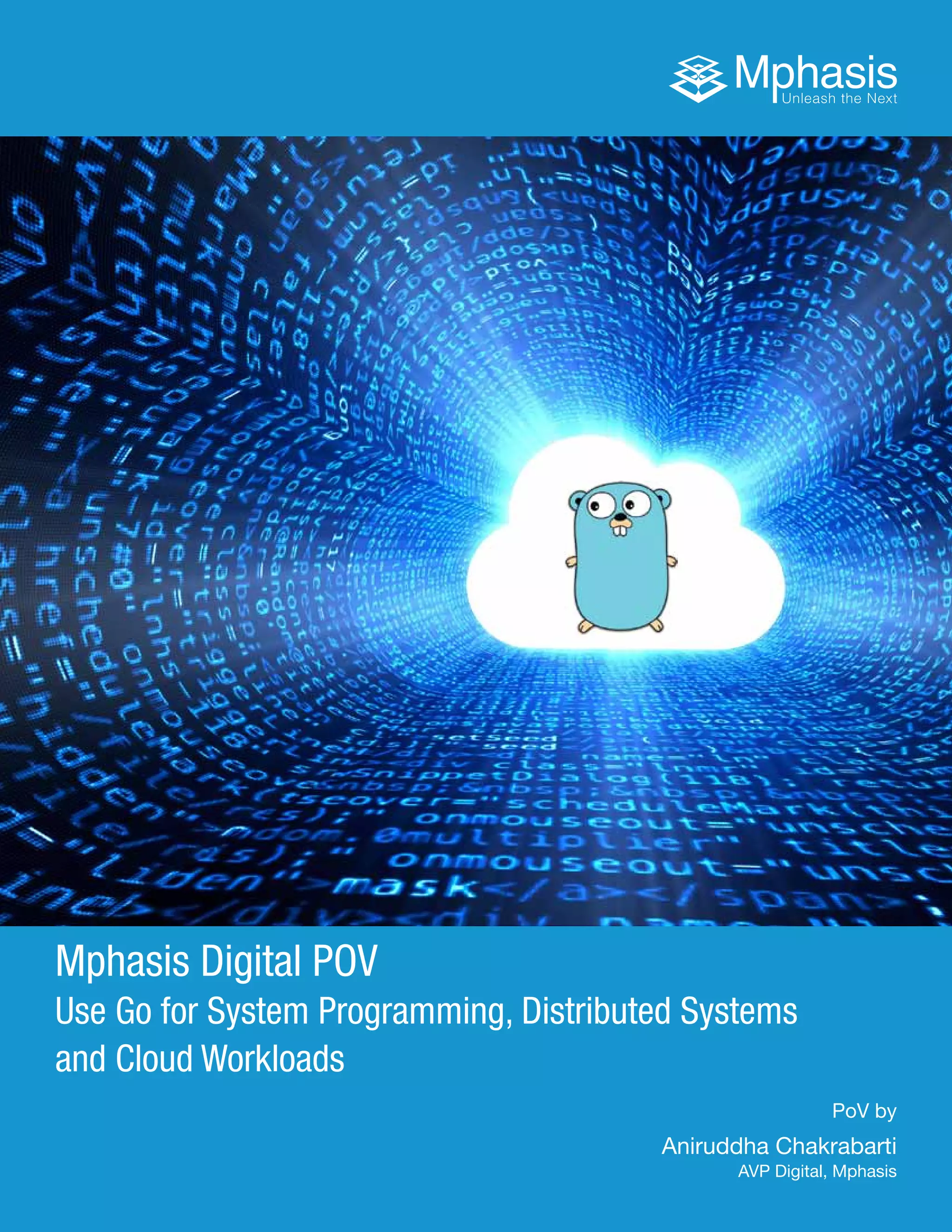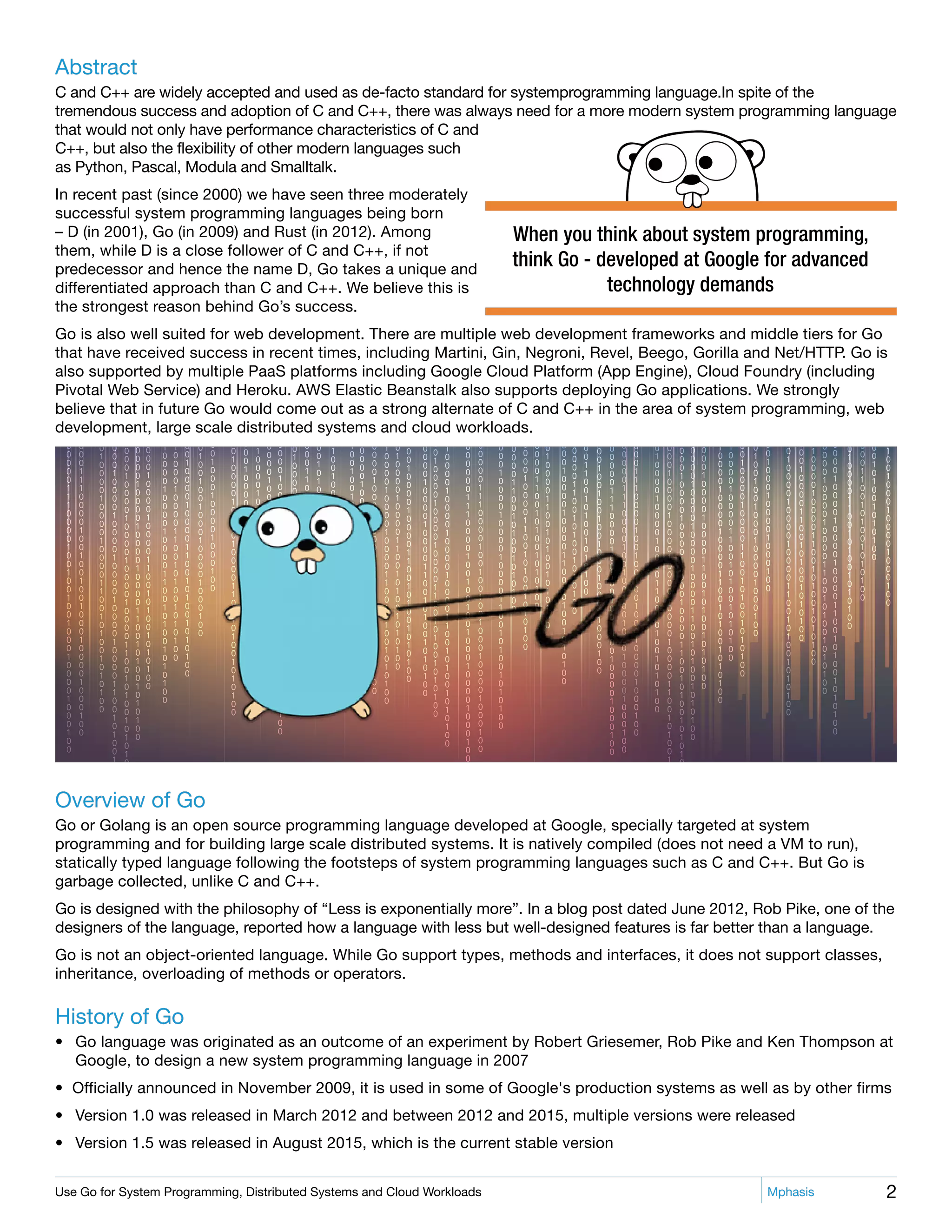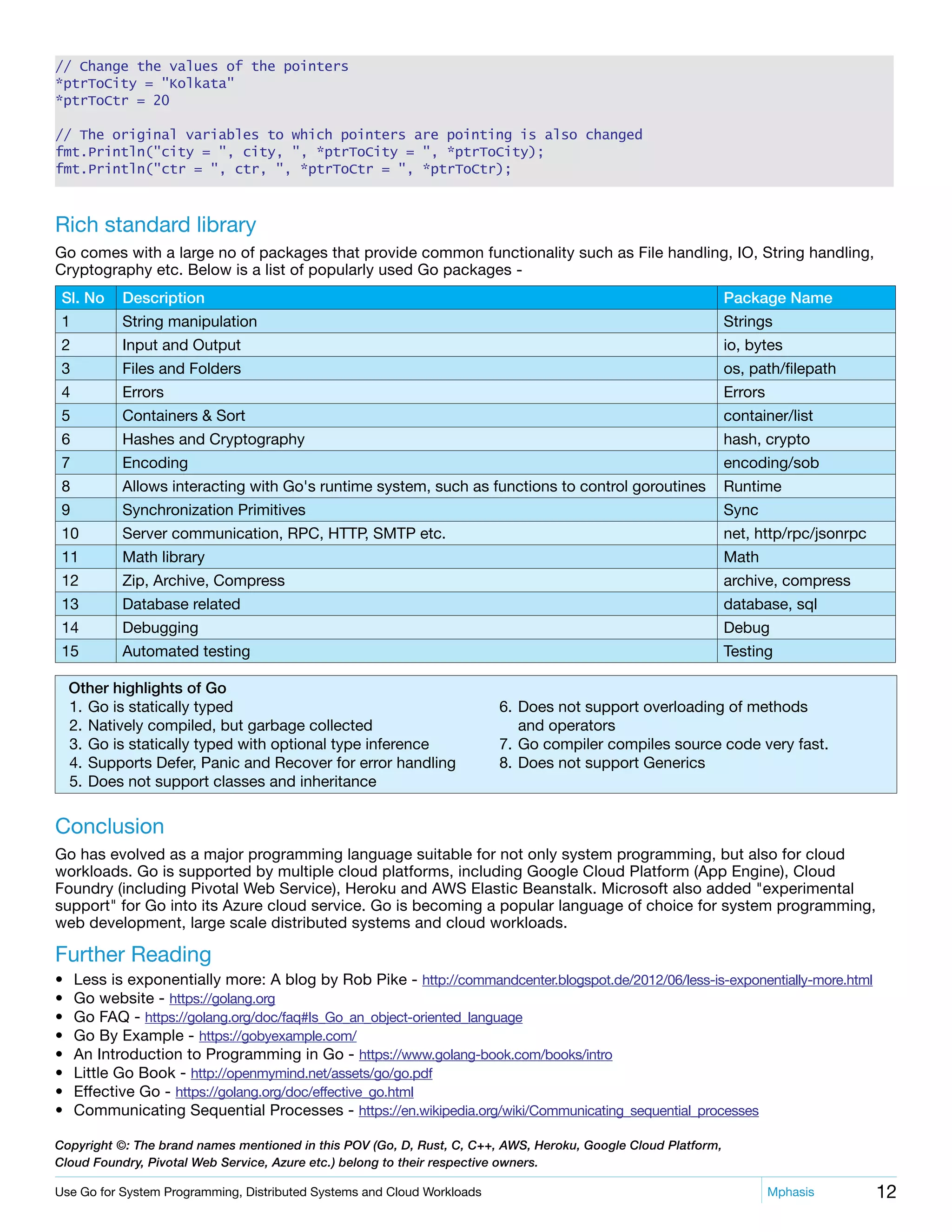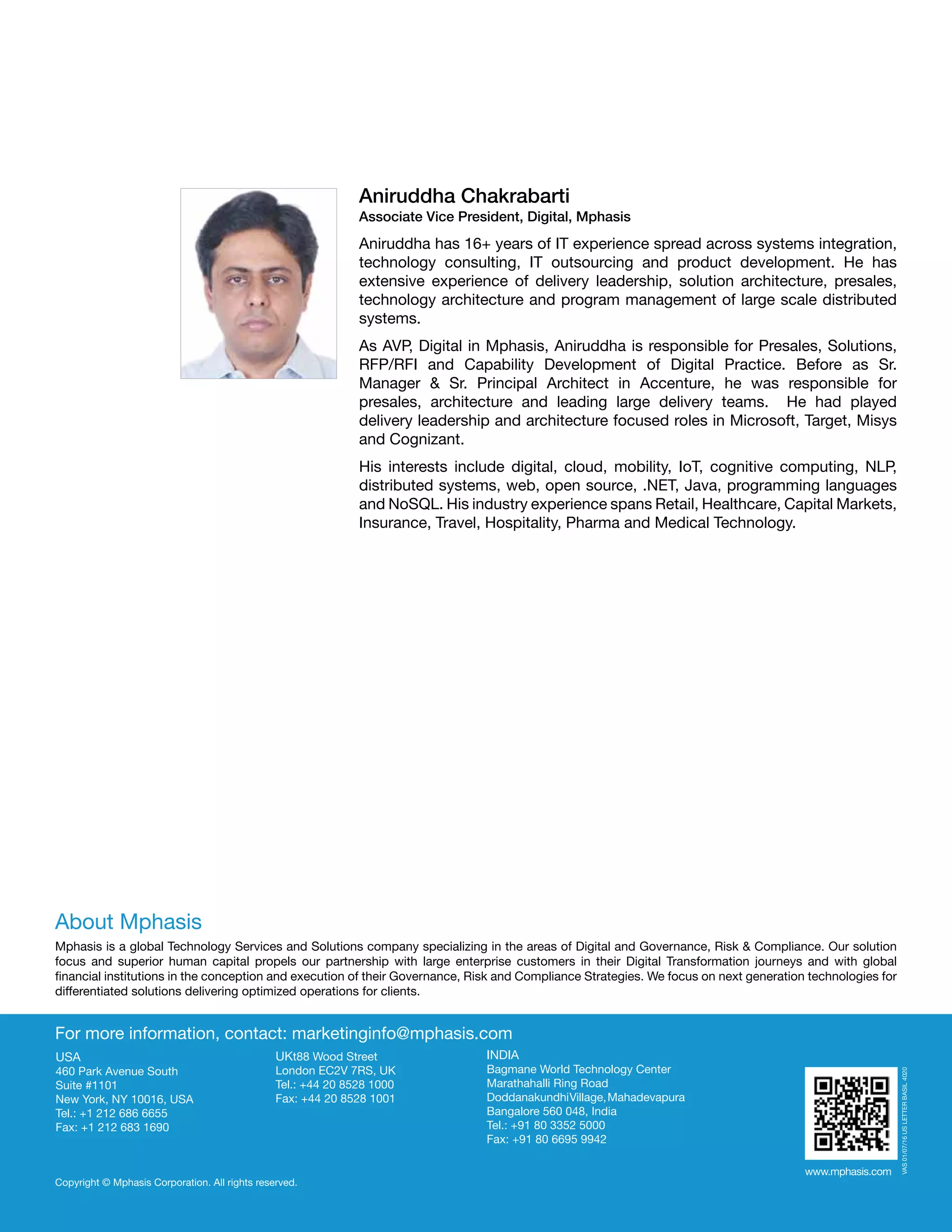Go is presented as an alternative to C and C++ for system programming, distributed systems, and cloud workloads. It has performance characteristics of C/C++ but also flexibility of modern languages. Go is well-suited for web development with various frameworks and is supported on cloud platforms like Google Cloud and AWS. The document argues that Go will emerge as a strong alternative to C/C++ in these areas.





![6Use Go for System Programming, Distributed Systems and Cloud Workloads Mphasis Structs and Methods Structs Go does not support Class, but supports Struct. Structs in Go are typed collections of named fields similar to other programming languages like C++ and Java. Structs can have methods apart from fields. Struct allows grouping of fields (data) and methods (behavior). type Employee struct { name string // field name of type string age int // field age of type int salary float32 // field salary of type float32 designation string // field designation of type string } Structs could be initialized either using new function (Option 1) or using JavaScript like object literal notation (Option 2) // Option 1 – using new function emp := new(Employee) emp.name = "Ken Thompson" emp.age = 50 emp.salary = 12345.678 emp.designation = "Distinguished Engineer" // Option 2 – using JavaScript like object literal notation emp := Employee{} emp.name = "Ken Thompson" emp.age = 50 emp.salary = 12345.678 emp.designation = "Distinguished Engineer" Another alternate is to specify field values as parameters in the same order fields are declared // Option 3 – parameters should be in the same order fields are declared emp := Employee{"Ken Thompson", 50, 12345.678, "Distinguished Engineer"} Note: ; are optional in Go similar to JavaScript. Local variables could be assigned without specifying their types using := instead of = Structs can have arrays and other child structs as fields type Employee struct{ Name string Age int Salary float32 Skills [4]string // Array field HomeAddress Address // Nested Child struct as property } type Address struct{ StreetAddress string City string Country string } func main(){ address := Address{"MG Road", "Blore", "IN"} skills := [4]string {"C","Go","Rwust"} emp := Employee{"Aniruddha", 40, 123.456, skills, address} fmt.Println(emp) // {Aniruddha 40 123.456 [C Go Rust] {MG Road Blore IN}} fmt.Println(emp.Skills) // [C Go Rust] fmt.Println(emp.HomeAddress.StreetAddress) // M G Road }](https://image.slidesharecdn.com/mphasisdigital-usegoforsystemprogrammingdistributedsystemsandcloudworkloads-160718154939/75/Mphasis-Digital-Use-Go-gloang-for-system-programming-distributed-systems-and-cloud-workloads-6-2048.jpg)






